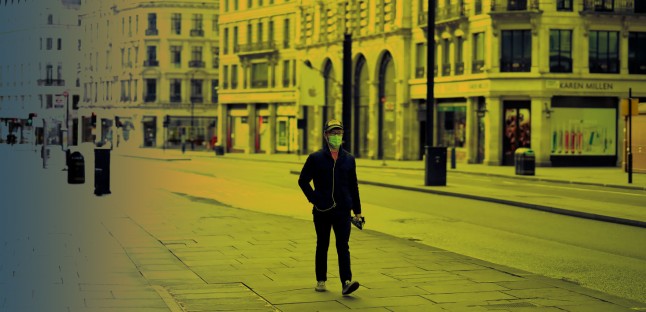Latest posts
A masterclass in creating value
What’s going on at parkrun?
Virtue-signalling all the way to the bank
Bud Light: brand purpose or virtue-signalling?
The Coddling of the American Mind, by Greg Lukianoff and Jonathan Haidt
Belonging, by Owen Eastwood
Such a simple thing
The Long Win, and The Scout Mindset
The Cult of We by Eliot Brown and Maureen Farrell
Coffee and covid modelling
By theme
Marketing strategy
Insight & metrics
Innovation & inspiration
Brand & positioning
Marketing communications
Business purpose
Leadership
By industry sector
Financial services
Retail
FMCG
Technology & start-ups
Consumer services
Business to business
Other sectors
By type
Books
Comment
Quotes
Thought leadership
How much of the change that’s been forced on us by the pandemic will stick? What can businesses learn from it? The best way to answer that is to understand what makes people change their habits. Knowing that, businesses can enact change for mutual benefit without waiting for a crisis.
The BBC reported the case of a fish and chip shop which had offered a click and collect service for years to get people to pre-order, with limited success. Customers just kept rocking up and joining the queue. When reopening after lockdown was allowed, counter service was off the menu. Everyone had to order online, for collection or delivery. Although forced into it, people seemed quite content. Pre-ordering meant no queuing, and the timed pick-up meant they could know exactly when they’d be home with their dinner. Why didn’t they try this before? No particular reason. They just didn’t need to.
Public transport strikes can have the same effect. People are forced to find alternatives to their regular commute. It’s been reported that a decent minority, maybe one in five, discover a better route which they stick with when the strike is over. Why didn’t they try this sooner (they may ask themselves)? No reason.
Habits are convenient and easy. We don’t waste brain effort in making choices every time. We also don’t engage in solving problems we haven’t seen. An acceptable food-ordering process, a reasonable commute, don’t need improving. People generally seek easy, frictionless processes. Innovation often focuses on making good things better. But if something is good enough, we may be unwilling to invest any effort at all in changing to a new way of doing things. We may not even notice. I would guess that lots of those chip shop customers hadn’t even looked at the website and certainly hadn’t weighed up the pros and cons of pre-ordering. It was the chip shop that wanted people to change their approach.
Businesses can persuade customers to adjust in ways that are mutually beneficial, but it may require a different starting point, one that lets you see what’s in it for the customer. It can also be fruitful to look for things that aren’t quite right, and remove the obstacles. That’s why customer dissatisfaction can be a better stimulus to innovation, especially process improvement, than the more celebrated customer satisfaction. Good scores are nice, but they aren’t always that useful.
Of course, legislation can force behaviour change. On 24 July, after months of fence-sitting about whether wearing a face-covering is beneficial in the drive to reduce the spread of Covid-19, it became compulsory to wear one in shops in England. In Scotland it’s been mandatory since 10 July.
The government’s desired outcome is that people will once again go shopping and spend money, for the sake of the economy. So the critical question is, Would wearing a mask make people more likely to go shopping?
In a large-scale survey I saw reported (which I can’t now find), 51% said it would make no difference. 25% said they were more likely to go shopping now that masks are compulsory in shops while 20% said they were less likely to go. A government minister might be encouraged by that. I read it differently. The 51% is the key number. Half of us believe we will not change our behaviour because of mask rules. That tells me there is a big communication task ahead for anyone trying to re-energise high street retail. To solve that problem, they will have to understand what’s stopping us. That 51% includes people who are already doing all the shopping they want, no stimulus needed. But it must be mostly people who aren’t going shopping much, since retail footfall is still well down on its pre-pandemic levels. Still we don’t know what problem to solve. Maybe people are still worried about the virus, and don’t feel masks will make enough difference. But maybe also they’ve discovered just how much you can do online. Maybe they’ve realised that going for a walk can be as enjoyable as a trip to the shopping mall. In either case, they may never return to their pre-Covid shopping habits. Businesses will have to adapt. To do that, they’ll have to dig deeper, to find sources of dissatisfaction they can solve for people, or to find new offerings that are good enough to get our attention and consideration.
Latest posts
A masterclass in creating value
What’s going on at parkrun?
Virtue-signalling all the way to the bank
Bud Light: brand purpose or virtue-signalling?
The Coddling of the American Mind, by Greg Lukianoff and Jonathan Haidt
Belonging, by Owen Eastwood
Such a simple thing
The Long Win, and The Scout Mindset
The Cult of We by Eliot Brown and Maureen Farrell
Coffee and covid modelling
By theme
Marketing strategy
Insight & metrics
Innovation & inspiration
Brand & positioning
Marketing communications
Business purpose
Leadership
By industry sector
Financial services
Retail
FMCG
Technology & start-ups
Consumer services
Business to business
Other sectors
By type
Books
Comment
Quotes
Thought leadership
